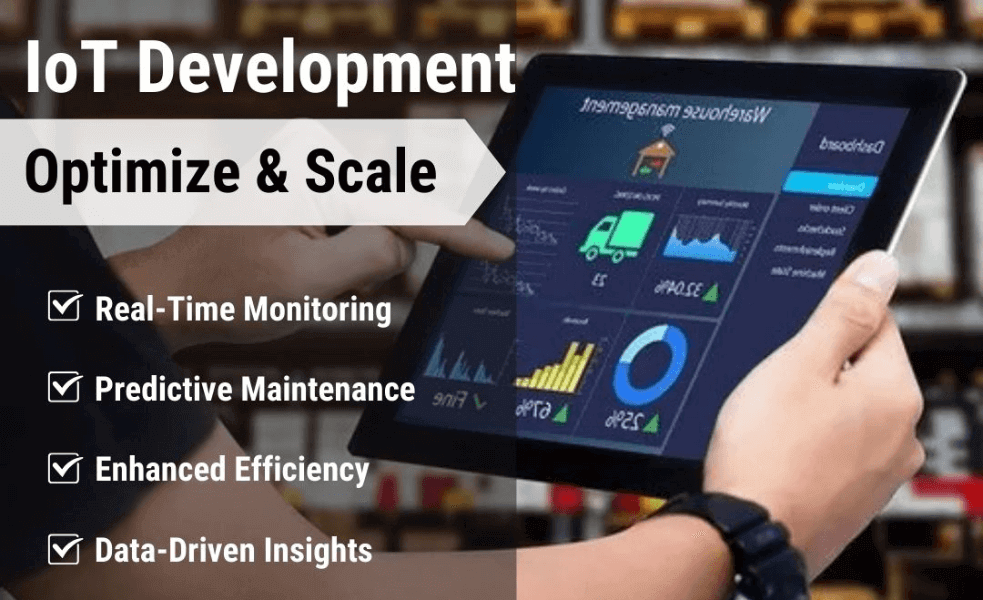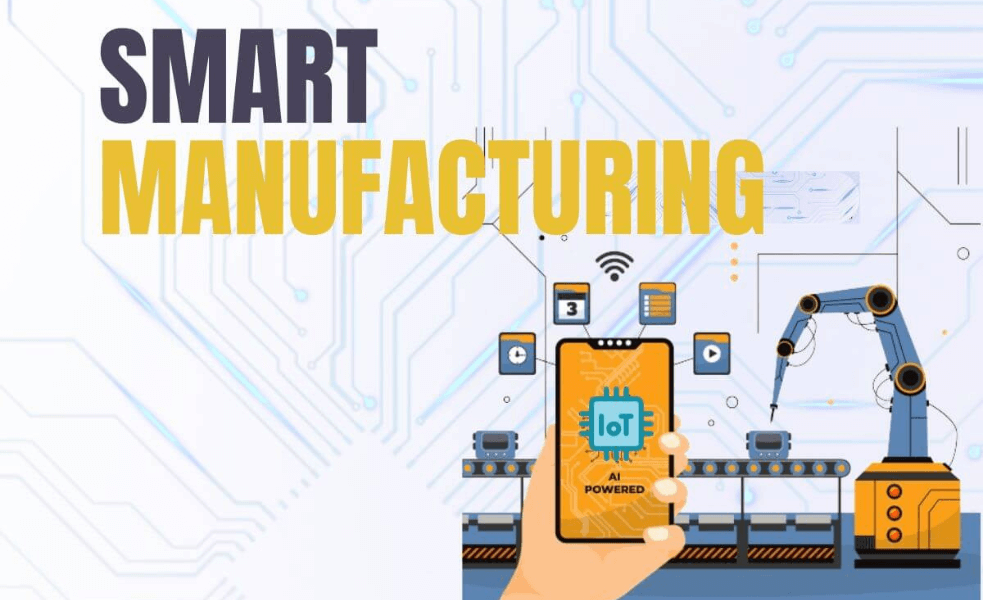Imagine a Manufacturing Future Fueled by Data
Imagine a factory where machines don’t just operate—they think, adapt, and optimize themselves. Picture a manufacturing environment where you don’t just react to problems, but you predict them before they happen.
This isn’t science fiction. This is the new reality of manufacturing, and it’s all powered by data—more specifically, by cloud computing and data analytics.
Today’s manufacturing world is a far cry from the days when factory floors were noisy, chaotic, and often full of unpredictable breakdowns. The reality today is about smart factories that thrive on data-driven decisions, enhanced by predictive maintenance, real-time analytics, and cloud platforms that connect every part of the operation seamlessly.
But how exactly is this transformation happening? How are manufacturers using data analytics and cloud computing to drive this change? And more importantly, how can you harness these technologies to unlock new levels of efficiency and profitability in your own operations?
In this blog, we’ll explore how data analytics and cloud computing are revolutionizing manufacturing—and how you can take advantage of these powerful tools to stay ahead of the curve.

Why Data Analytics Is the Key to Smarter Manufacturing
Let’s face it. We live in a data-driven world, and manufacturing is no different. Every part of your operation—from production lines and supply chains to equipment maintenance and employee performance—generates massive amounts of data. The challenge isn’t collecting data; it’s knowing what to do with it.
The secret to smarter manufacturing lies in data analytics. With the right tools and processes in place, manufacturers can transform raw data into actionable insights that lead to more informed decisions and more efficient operations.

Data Analytics: Turning Information into Action
Data analytics refers to the process of using algorithms and statistical techniques to analyze raw data and uncover patterns, correlations, and trends. In manufacturing, these insights help businesses optimize operations, predict maintenance needs, improve quality control, and ultimately increase their bottom line.
Consider this: In a traditional manufacturing setup, equipment failure is often a reactive process. The machine breaks down, production halts, and your team scrambles to fix the issue. But with predictive analytics, this process can be turned on its head.

Predictive Analytics: Avoiding Downtime Before It Happens
Using historical data and machine learning algorithms, predictive analytics can help you forecast when a machine is likely to fail—often before you even notice a problem. The result? Reduced downtime, fewer expensive repairs, and smoother production schedules.
Let’s take an example. Imagine your company uses IoT sensors to track the health of machinery on the production floor. The sensors detect a pattern that suggests a motor is likely to fail in the next few weeks. Using predictive analytics, you can schedule a maintenance check before the motor actually breaks down, preventing costly delays and keeping your operations on track.
This kind of foresight is invaluable in today’s fast-paced, cost-conscious manufacturing world. And it’s just one example of how data analytics is helping manufacturers to not only stay competitive but also thrive.
The Impact of Data Analytics in Manufacturing:
 Improved Efficiency
Improved Efficiency Better Quality Control
Better Quality Control Cost Reduction
Cost Reduction Informed Decision-Making
Informed Decision-Making
The Power of Cloud Computing in Modern Manufacturing
As crucial as data analytics is, it needs the right environment to thrive. This is where cloud computing comes into play. Cloud technology provides the infrastructure manufacturers need to store, process, and share data on a scale that was previously unimaginable.

What is Cloud Computing?
Cloud computing refers to the delivery of computing services—like servers, storage, and software—over the internet. Rather than relying on expensive, in-house servers and infrastructure, manufacturers can access virtually unlimited computing power through cloud services, paying only for what they use.

what does this mean for manufacturers?
Let’s start with data storage. Manufacturing operations generate massive amounts of data—data that needs to be stored securely and accessed quickly. Cloud platforms allow manufacturers to store this data without having to invest in costly physical infrastructure.

Real-Time Data Access and Collaboration
Cloud computing also allows manufacturers to access real-time data from anywhere in the world, at any time. Whether you’re in the office or on the factory floor, you can pull up the latest performance metrics, production data, or machine health status—all in real-time.
But that’s just the beginning. Cloud computing enables collaboration in ways that were once impossible. With cloud-based platforms, teams across departments—from production to quality control to logistics—can access the same data simultaneously, ensuring that decisions are made based on accurate, real-time information.
Why Cloud Computing Matters for Manufacturers:
 Cost Savings: Cloud services eliminate the need for expensive physical infrastructure, reducing overhead costs.
Cost Savings: Cloud services eliminate the need for expensive physical infrastructure, reducing overhead costs. Scalability: As your operations grow, so does your need for data storage and processing power. Cloud solutions allow you to scale seamlessly.
Scalability: As your operations grow, so does your need for data storage and processing power. Cloud solutions allow you to scale seamlessly. Data Accessibility: Real-time access to data means more informed decisions, better collaboration, and faster problem-solving.
Data Accessibility: Real-time access to data means more informed decisions, better collaboration, and faster problem-solving. Security: Cloud platforms offer high levels of encryption and security, ensuring your sensitive manufacturing data is protected.
Security: Cloud platforms offer high levels of encryption and security, ensuring your sensitive manufacturing data is protected.
How Data Analytics and Cloud Computing Work Together
The magic really happens when data analytics and cloud computing come together. Cloud computing provides the infrastructure to store and process the vast amounts of data generated by manufacturing operations. Data analytics provides the tools to analyze this data, turning it into actionable insights.
Together, these technologies create a feedback loop:
- Data is collected and stored in the cloud
- Analytics tools analyze the data to uncover patterns and insights.
- These insights lead to more informed decisions.
- The results of those decisions are tracked, generating more data.
- The cycle repeats, continuously improving operations.
Example: Real-Time Manufacturing Optimization
Let’s say you have a production line with multiple machines. Each machine is generating data on its performance, output, and health. This data is uploaded to the cloud, where it’s processed in real-time using data analytics tools.
If an issue arises—say a machine is producing defective parts—the system immediately alerts the relevant team, recommending immediate action. The team can access the necessary data from the cloud and use predictive analytics to determine whether the problem is due to a maintenance issue or a process flaw. Armed with these insights, the team can take corrective action right away, preventing further defects and optimizing the production process.
This is a simple example, but it illustrates the power of combining cloud computing with data analytics: the ability to make informed, real-time decisions that drive efficiency, improve quality, and ultimately increase profitability.

The Future of Manufacturing: Data-Driven, Cloud-Powered Innovation
Looking ahead, it’s clear that data analytics and cloud computing are not just passing trends—they’re the foundation of the next generation of manufacturing. In fact, the manufacturers who don’t embrace these technologies will likely fall behind.
But it’s not just about adopting the latest tools. It’s about transforming your entire operation to be data-driven and cloud-powered. This shift opens up new opportunities for innovation, collaboration, and growth that weren’t possible just a few years ago.
Manufacturers who leverage the power of data are well-positioned to:
 Drive continuous improvement: By collecting and analyzing data at every stage of production, manufacturers can continually refine and optimize their processes.
Drive continuous improvement: By collecting and analyzing data at every stage of production, manufacturers can continually refine and optimize their processes. Enhance customer experiences: Real-time data allows manufacturers to better predict customer demand and adjust production schedules to meet market needs.
Enhance customer experiences: Real-time data allows manufacturers to better predict customer demand and adjust production schedules to meet market needs. Foster innovation: Data-driven insights can lead to breakthroughs in product design, production methods, and business strategy.
Foster innovation: Data-driven insights can lead to breakthroughs in product design, production methods, and business strategy.Ultimately, the future of manufacturing isn’t just about producing more—it’s about producing smarter.
The Time to Act Is Now
The future of manufacturing is data-driven. And with cloud computing and data analytics at the forefront of this transformation, there’s no better time to embrace these technologies and unlock the full potential of your operations.
By adopting these tools, you’re not just improving efficiency—you’re building a smarter, more agile operation that can adapt to the changing demands of the marketplace.
So, what’s next? The first step is simple: start using data to its full potential. The future of manufacturing is waiting—and it’s driven by data.



